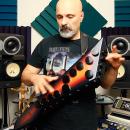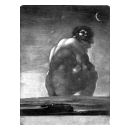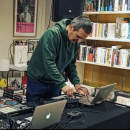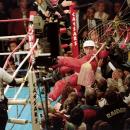"20 tips on Home Mastering", written by Paul White.
Now that so many musicians are completing the entire album-making process in their own studios, mastering is becoming an increasingly important skill. Paul White offers a few pointers to becoming a Master of mastering.
There's a world of difference between what happens in a professional mastering suite and what the average project studio owner can do at home. But as more computer-based mastering tools become available it's quite possible to achieve very impressive results with relatively inexpensive equipment. Certainly there's a lot more to mastering than simply compressing everything, though compression can play an important role. The most crucial tool is the ear of the person doing the job, because successful mastering is all about treating every project individually. There's no standard blanket treatment that you can apply to everything to make it sound more 'produced'.
Every mastering engineer has preferences regarding the best tools for the job, but if you're just getting started I'd recommend a good parametric equaliser, a nice compressor/limiter, and perhaps an enhancer, such as an Aphex Exciter or an SPL Vitalizer. You also need an accurate monitoring environment with speakers that have a reasonable bass extension, and some form of computer editor that can handle stereo files. The latter should ideally have digital inputs and outputs, though if you're using an external analogue processor you'll probably be going into the computer via its analogue inputs, in which case these need to be of good quality too. A professional may want to start off with a 20- or 24-bit master tape or to work from a half-inch analogue master, but in the home studio most recording is done to 16-bit DAT. This shouldn't be a problem for most pop music, providing you proceed carefully.
Most mistakes are due to over-processing, and the old adage 'If it ain't broke, don't fix it' applies perfectly to mastering. Don't feel that you have to process a piece of music just because you can -- you might find that your master sounds worse than the original material. And now for the tips...
1. Where possible, handle fade-out endings in a computer editor, rather than using a master tape that was faded while mixing. Not only does the computer provide more control, it will also fade out any background noise along with the music, so that the songs end in perfect silence.
2. Editing on DAT is very imprecise, so when you beam the material into the computer (digitally, if at all possible) clean up the starts of songs using the Silence function. Use the waveform display to make sure you silence right up to the start of the song without clipping it. As a rule, endings should be faded out rather than silenced, as most instruments end with a natural decay. When the last note or beat has decayed to around 5% of its maximum level, start your fade and make it around a second long. You can also try this if the song already has a fade-out, though you may want a slightly longer fade time. Listen carefully to make sure you aren't shortening any long reverb tails or making an existing fade sound unnatural.
3. Once you've decided on a running order for the tracks on the album, you'll need to match their levels. This doesn't simply mean making everything the same level, as this will make any ballads seem inappropriately loud. The vocals often give you the best idea of how well matched levels are across songs, but ultimately your ears are the best judge. Use the computer's ability to access any part of the album at random to compare the subjective levels of different songs, and pay particular attention to the levels of the songs either side of the one you're working on. It's in the transition between one song and the next that bad level-matching shows up most.
"If an album's tracks were recorded at different times or in different studios, they may not sit well together without further processing."
4. If an album's tracks were recorded at different times or in different studios, they may not sit well together without further processing. The use of a good parametric equaliser (hardware or software) will often improve matters. Listen to the bass end of each song to see how that differs and use the EQ to try to even things out. For example, one song might have all the bass energy bunched up at around 80 or 90Hz while another might have an extended deep bass that goes right down to 40Hz or below. Rolling off the sub-bass and peaking up the 80Hz area slightly may bring the bass end back into focus. Similarly, the track with bunched-up bass could be treated with a gentle 40Hz boost and a little cut at around 120Hz. Every equaliser behaves differently, so there are no universal figures -- you'll need to experiment.
At the mid and high end, use gentle boost between 6 and 15kHz to add air and presence to a mix, while cutting at 1-3kHz to reduce harshness. Boxiness tends to occur between 150 and 400Hz. If you need to add top to a track that doesn't have any, try a harmonic enhancer such as an Aphex Exciter -- high-end EQ boost will simply increase the hiss.
5. To make a track sound louder when it's already peaking close to digital full scale, use a digital limiter such as the excellent Waves L1 plug-in or Logic Audio's built-in Energizer. In most cases you can increase the overall level by 6dB or more before your ears notice that the peaks have been processed. A nice feature of the L1 is that you can effectively limit and normalise in one operation. It's always good practice to normalise the loudest track on an album to peak at around -0.5dB and then balance the others to that track, but if you're using the L1 to do this, make normalising your last process, so that you can use the Waves proprietary noise-shaped dither system to give the best possible dynamic range. Normalising or other level-matching changes should always be the final procedure, as all EQ, dynamics and enhancement involves some degree of level change.
Proper re-dithering at the 16-bit level is also recommended if going direct via a digital output to the production master tape, as it preserves the best dynamic range. Analogue outputs will be
re-dithered by the A-D converter of the recorder.
6. If a mix sounds middly or lacking in definition, the SPL Vitalizer can be very useful (even the very inexpensive Stereo Jack version produces excellent results). This device combines EQ and enhancer principles in a single box, and one characteristic of the Vitalizer process is that the mid-range tends to get cleaned up at the same time as the high end is enhanced and deep bass is added. As with all enhancers, though, be very careful not to over-use it: keep switching the process in and out, to preserve your sense of perspective. The same applies to EQ and dynamics -- check regularly against the untreated version to ensure that you're not making things worse.
7. Have a CD player and reference material on hand to use as a comparison for your work. Not only does this act as a reference for your ears, it also helps to iron out any inaccuracies in your monitoring system.
8. Overall compression can add energy to a mix and even out a performance, but it isn't mandatory. Music needs some light and shade to provide dynamics. Often a compressor will change the apparent balance of a mix slightly, so you may need to use it in combination with EQ. Placing EQ before the compressor results in any boosted frequencies being compressed most, while placing it after the compressor allows you to equalise the compressed sound without affecting the compressor operation. Which is best depends on the material being treated, so try both.
9. A split-band compressor or dynamic equaliser gives more scope for changing the spectral balance of a mix, but these devices take a little practice before you feel you're controlling them and not vice versa!
10. One way to homogenise a mix that doesn't quite gel, or one that sounds too dry, is to add reverb to the entire mix. This has to be done very carefully, as excess reverb can create a washy or cluttered impression, but I find Lexicon's Ambience programs excellent for giving a mix a discreet sense of space and identity. If the reverb is cluttering up the bass sounds, try rolling off the bass from the reverb send.
If you want to add a stereo width enhancing effect to a finished mix, there are two main things to consider: the balance of the mix and the mono compatibility of the end result. Most width enhancers tend to increase the level of panned or stereo sounds while suppressing centre sounds slightly. Sometimes this can be compensated for by EQ, but being aware of what's happening is half the battle. Other than the simple phase-inversion width enhancement used in the SPL Vitalizer, which is completely mono-compatible, width enhancement tends to compromise the sound of the mono mix, so always check with the mono button in. While most serious listening equipment is stereo these days, many TVs and portable radios are not, so mono compatibility is important.
11. Listen to the finished master all the way through, preferably using headphones, as these have the ability to show up small glitches and noises that loudspeakers may mask. Digital clicks can occur in even the best systems, though using good quality digital interconnects that are no longer than necessary helps to reduce the risk.
12. Try to work from a 44.1kHz master tape if the end product will be a CD master. If you have to work from a 48kHz tape or one with different tracks recorded at different sample rates, a stand-alone sample-rate converter can be used during transfer of the material into a computer. If you don't have a sample-rate converter, most editing software will allow you to do a conversion inside the computer, though this takes processing time and the quality is not always as good as that from a good-quality dedicated unit.
When using a software sample-rate converter, ensure that the tracks are all recorded with the computer system set to the same sample rate as the source material. If you don't have a sample-rate converter at all, don't worry too much, as transferring in the analogue domain via decent external A-D and D-A converters may well produce better results than an indifferent sample rate converter (with free re-dithering thrown in too!). Alternatively, if your master is for commercial production rather than for making CD-Rs at home, leave your master at 48kHz and inform the mastering house so that they can handle the conversion for you.
13. When you're transferring digital material into a computer, ensure that the computer hardware is set to external digital sync during recording and internal sync during playback. Also double-check that your record sample rate matches the source sample rate -- people will often present you with DAT tapes at the wrong sample rate, or even with different tracks at different sample rates. All too often this is overlooked, until someone realises that one of the songs is playing back around 10 percent slow!
14. Don't expect digital de-noising programs to work miracles -- even the best systems produce side-effects if you push them too far. The simpler systems are effectively multi-band expanders, where the threshold of each band is set by first analysing a section of noise from between tracks. For this reason it's best not to try to clean up your original masters prior to editing, otherwise there may be no noise samples left to work from. With careful use you can achieve a few dB of noise reduction before the side-effects set in -- as low-level signals open and close the expanders in the various bands, the background noise is modulated in a way that can only be described as 'chirping'. The more noise reduction you try to achieve, the worse the chirping, so it's best to use as little as you can get away with.
15. When editing individual tracks -- for example, when compiling a version from the best sections of several recordings -- try to make butt joins just before or just after a drum beat, so that any discontinuities are masked by the beat. However, if you have to use a crossfade edit to smooth over a transition, try to avoid including a drum beat in the crossfade zone, or you may hear a phasing or flamming effect where the two beats overlap. As a rule, crossfades should be as short as you can get away with, to avoid a double-tracked effect during the fade zone. As little as 10-30ms is enough to avoid producing a click.
16. On important projects, make two copies of the final mastered DAT (one as a backup) and mark these as Production Master and Clone. Write the sample rate on the box, along with all other relevant data. If you include test tones, document their level and include a list of all the track start times and running lengths for the benefit of the CD manufacturer. As mentioned earlier, if, for any reason, you have produced a 48kHz sample rate master, mark this clearly on the Production DAT Master so that the CD manufacturer can sample-rate convert it for you.
It's always a good idea to avoid recording audio during the first minute or so of a new DAT tape, to avoid the large number of dropouts commonly caused by the leader clip in the tape-spool hub. You can, however, use this section to record test tones, which will also demonstrate to the person playing your tape that it isn't blank! If you put DAT start IDs on each track, check them carefully to make sure that there are no spurious ones, and don't use skip IDs.
17. When deciding on how much space to leave between tracks on an album, listen to how the first track ends and the second one starts. Gaps are rarely shorter than two seconds, but if the starts and ends are very abrupt you may need to leave up to four seconds between tracks. Use the pre-roll feature of your digital editor to listen to the transition, so that you can get a feel for when the next track should start.
18. When using a CD-R recorder to produce a master that will itself be used for commercial CD production, ensure that the disc can be written in disc-at-once mode rather than a track at a time, and that your software supports PQ coding to Red Book standard. Check with your CD manufacturer to confirm that they can work from CD-R as a master, and take note of any special requirements they may have. Be very careful when handling blank CD-Rs -- there are commercial CDs on the market with beautiful fingerprints embedded in the digital data!
"The old adage 'If it ain't broke, don't fix it' applies perfectly to mastering."
19. Be aware that stand-alone audio CD recorders usually have an automatic shut-off function if gaps in the audio exceed a preset number of seconds, usually between six and 20. This may be a problem if you need large gaps between tracks. Occasionally, even very low-level passages in classical music can be interpreted as gaps. Also note that these recorders will continue recording for that same preset number of seconds after the last track, so you'll need to stop recording manually if you don't want a chunk of silence at the end of the album.
20. When making a digital transfer from a DAT recorder to a CD recorder that can read DAT IDs, it's best to manually edit the DAT IDs first, so that they occur around half a second before the start of the track. Then you don't risk missing part of the first note when the track is accessed on a regular CD player. Alternatively, there are commercial interface units (or CD-R recorders with the facility built in) that delay the audio stream in order to make coincident or slightly late DAT IDs appear before the audio on the CD-R.
Now that so many musicians are completing the entire album-making process in their own studios, mastering is becoming an increasingly important skill. Paul White offers a few pointers to becoming a Master of mastering.
There's a world of difference between what happens in a professional mastering suite and what the average project studio owner can do at home. But as more computer-based mastering tools become available it's quite possible to achieve very impressive results with relatively inexpensive equipment. Certainly there's a lot more to mastering than simply compressing everything, though compression can play an important role. The most crucial tool is the ear of the person doing the job, because successful mastering is all about treating every project individually. There's no standard blanket treatment that you can apply to everything to make it sound more 'produced'.
Every mastering engineer has preferences regarding the best tools for the job, but if you're just getting started I'd recommend a good parametric equaliser, a nice compressor/limiter, and perhaps an enhancer, such as an Aphex Exciter or an SPL Vitalizer. You also need an accurate monitoring environment with speakers that have a reasonable bass extension, and some form of computer editor that can handle stereo files. The latter should ideally have digital inputs and outputs, though if you're using an external analogue processor you'll probably be going into the computer via its analogue inputs, in which case these need to be of good quality too. A professional may want to start off with a 20- or 24-bit master tape or to work from a half-inch analogue master, but in the home studio most recording is done to 16-bit DAT. This shouldn't be a problem for most pop music, providing you proceed carefully.
Most mistakes are due to over-processing, and the old adage 'If it ain't broke, don't fix it' applies perfectly to mastering. Don't feel that you have to process a piece of music just because you can -- you might find that your master sounds worse than the original material. And now for the tips...
1. Where possible, handle fade-out endings in a computer editor, rather than using a master tape that was faded while mixing. Not only does the computer provide more control, it will also fade out any background noise along with the music, so that the songs end in perfect silence.
2. Editing on DAT is very imprecise, so when you beam the material into the computer (digitally, if at all possible) clean up the starts of songs using the Silence function. Use the waveform display to make sure you silence right up to the start of the song without clipping it. As a rule, endings should be faded out rather than silenced, as most instruments end with a natural decay. When the last note or beat has decayed to around 5% of its maximum level, start your fade and make it around a second long. You can also try this if the song already has a fade-out, though you may want a slightly longer fade time. Listen carefully to make sure you aren't shortening any long reverb tails or making an existing fade sound unnatural.
3. Once you've decided on a running order for the tracks on the album, you'll need to match their levels. This doesn't simply mean making everything the same level, as this will make any ballads seem inappropriately loud. The vocals often give you the best idea of how well matched levels are across songs, but ultimately your ears are the best judge. Use the computer's ability to access any part of the album at random to compare the subjective levels of different songs, and pay particular attention to the levels of the songs either side of the one you're working on. It's in the transition between one song and the next that bad level-matching shows up most.
"If an album's tracks were recorded at different times or in different studios, they may not sit well together without further processing."
4. If an album's tracks were recorded at different times or in different studios, they may not sit well together without further processing. The use of a good parametric equaliser (hardware or software) will often improve matters. Listen to the bass end of each song to see how that differs and use the EQ to try to even things out. For example, one song might have all the bass energy bunched up at around 80 or 90Hz while another might have an extended deep bass that goes right down to 40Hz or below. Rolling off the sub-bass and peaking up the 80Hz area slightly may bring the bass end back into focus. Similarly, the track with bunched-up bass could be treated with a gentle 40Hz boost and a little cut at around 120Hz. Every equaliser behaves differently, so there are no universal figures -- you'll need to experiment.
At the mid and high end, use gentle boost between 6 and 15kHz to add air and presence to a mix, while cutting at 1-3kHz to reduce harshness. Boxiness tends to occur between 150 and 400Hz. If you need to add top to a track that doesn't have any, try a harmonic enhancer such as an Aphex Exciter -- high-end EQ boost will simply increase the hiss.
5. To make a track sound louder when it's already peaking close to digital full scale, use a digital limiter such as the excellent Waves L1 plug-in or Logic Audio's built-in Energizer. In most cases you can increase the overall level by 6dB or more before your ears notice that the peaks have been processed. A nice feature of the L1 is that you can effectively limit and normalise in one operation. It's always good practice to normalise the loudest track on an album to peak at around -0.5dB and then balance the others to that track, but if you're using the L1 to do this, make normalising your last process, so that you can use the Waves proprietary noise-shaped dither system to give the best possible dynamic range. Normalising or other level-matching changes should always be the final procedure, as all EQ, dynamics and enhancement involves some degree of level change.
Proper re-dithering at the 16-bit level is also recommended if going direct via a digital output to the production master tape, as it preserves the best dynamic range. Analogue outputs will be
re-dithered by the A-D converter of the recorder.
6. If a mix sounds middly or lacking in definition, the SPL Vitalizer can be very useful (even the very inexpensive Stereo Jack version produces excellent results). This device combines EQ and enhancer principles in a single box, and one characteristic of the Vitalizer process is that the mid-range tends to get cleaned up at the same time as the high end is enhanced and deep bass is added. As with all enhancers, though, be very careful not to over-use it: keep switching the process in and out, to preserve your sense of perspective. The same applies to EQ and dynamics -- check regularly against the untreated version to ensure that you're not making things worse.
7. Have a CD player and reference material on hand to use as a comparison for your work. Not only does this act as a reference for your ears, it also helps to iron out any inaccuracies in your monitoring system.
8. Overall compression can add energy to a mix and even out a performance, but it isn't mandatory. Music needs some light and shade to provide dynamics. Often a compressor will change the apparent balance of a mix slightly, so you may need to use it in combination with EQ. Placing EQ before the compressor results in any boosted frequencies being compressed most, while placing it after the compressor allows you to equalise the compressed sound without affecting the compressor operation. Which is best depends on the material being treated, so try both.
9. A split-band compressor or dynamic equaliser gives more scope for changing the spectral balance of a mix, but these devices take a little practice before you feel you're controlling them and not vice versa!
10. One way to homogenise a mix that doesn't quite gel, or one that sounds too dry, is to add reverb to the entire mix. This has to be done very carefully, as excess reverb can create a washy or cluttered impression, but I find Lexicon's Ambience programs excellent for giving a mix a discreet sense of space and identity. If the reverb is cluttering up the bass sounds, try rolling off the bass from the reverb send.
If you want to add a stereo width enhancing effect to a finished mix, there are two main things to consider: the balance of the mix and the mono compatibility of the end result. Most width enhancers tend to increase the level of panned or stereo sounds while suppressing centre sounds slightly. Sometimes this can be compensated for by EQ, but being aware of what's happening is half the battle. Other than the simple phase-inversion width enhancement used in the SPL Vitalizer, which is completely mono-compatible, width enhancement tends to compromise the sound of the mono mix, so always check with the mono button in. While most serious listening equipment is stereo these days, many TVs and portable radios are not, so mono compatibility is important.
11. Listen to the finished master all the way through, preferably using headphones, as these have the ability to show up small glitches and noises that loudspeakers may mask. Digital clicks can occur in even the best systems, though using good quality digital interconnects that are no longer than necessary helps to reduce the risk.
12. Try to work from a 44.1kHz master tape if the end product will be a CD master. If you have to work from a 48kHz tape or one with different tracks recorded at different sample rates, a stand-alone sample-rate converter can be used during transfer of the material into a computer. If you don't have a sample-rate converter, most editing software will allow you to do a conversion inside the computer, though this takes processing time and the quality is not always as good as that from a good-quality dedicated unit.
When using a software sample-rate converter, ensure that the tracks are all recorded with the computer system set to the same sample rate as the source material. If you don't have a sample-rate converter at all, don't worry too much, as transferring in the analogue domain via decent external A-D and D-A converters may well produce better results than an indifferent sample rate converter (with free re-dithering thrown in too!). Alternatively, if your master is for commercial production rather than for making CD-Rs at home, leave your master at 48kHz and inform the mastering house so that they can handle the conversion for you.
13. When you're transferring digital material into a computer, ensure that the computer hardware is set to external digital sync during recording and internal sync during playback. Also double-check that your record sample rate matches the source sample rate -- people will often present you with DAT tapes at the wrong sample rate, or even with different tracks at different sample rates. All too often this is overlooked, until someone realises that one of the songs is playing back around 10 percent slow!
14. Don't expect digital de-noising programs to work miracles -- even the best systems produce side-effects if you push them too far. The simpler systems are effectively multi-band expanders, where the threshold of each band is set by first analysing a section of noise from between tracks. For this reason it's best not to try to clean up your original masters prior to editing, otherwise there may be no noise samples left to work from. With careful use you can achieve a few dB of noise reduction before the side-effects set in -- as low-level signals open and close the expanders in the various bands, the background noise is modulated in a way that can only be described as 'chirping'. The more noise reduction you try to achieve, the worse the chirping, so it's best to use as little as you can get away with.
15. When editing individual tracks -- for example, when compiling a version from the best sections of several recordings -- try to make butt joins just before or just after a drum beat, so that any discontinuities are masked by the beat. However, if you have to use a crossfade edit to smooth over a transition, try to avoid including a drum beat in the crossfade zone, or you may hear a phasing or flamming effect where the two beats overlap. As a rule, crossfades should be as short as you can get away with, to avoid a double-tracked effect during the fade zone. As little as 10-30ms is enough to avoid producing a click.
16. On important projects, make two copies of the final mastered DAT (one as a backup) and mark these as Production Master and Clone. Write the sample rate on the box, along with all other relevant data. If you include test tones, document their level and include a list of all the track start times and running lengths for the benefit of the CD manufacturer. As mentioned earlier, if, for any reason, you have produced a 48kHz sample rate master, mark this clearly on the Production DAT Master so that the CD manufacturer can sample-rate convert it for you.
It's always a good idea to avoid recording audio during the first minute or so of a new DAT tape, to avoid the large number of dropouts commonly caused by the leader clip in the tape-spool hub. You can, however, use this section to record test tones, which will also demonstrate to the person playing your tape that it isn't blank! If you put DAT start IDs on each track, check them carefully to make sure that there are no spurious ones, and don't use skip IDs.
17. When deciding on how much space to leave between tracks on an album, listen to how the first track ends and the second one starts. Gaps are rarely shorter than two seconds, but if the starts and ends are very abrupt you may need to leave up to four seconds between tracks. Use the pre-roll feature of your digital editor to listen to the transition, so that you can get a feel for when the next track should start.
18. When using a CD-R recorder to produce a master that will itself be used for commercial CD production, ensure that the disc can be written in disc-at-once mode rather than a track at a time, and that your software supports PQ coding to Red Book standard. Check with your CD manufacturer to confirm that they can work from CD-R as a master, and take note of any special requirements they may have. Be very careful when handling blank CD-Rs -- there are commercial CDs on the market with beautiful fingerprints embedded in the digital data!
"The old adage 'If it ain't broke, don't fix it' applies perfectly to mastering."
19. Be aware that stand-alone audio CD recorders usually have an automatic shut-off function if gaps in the audio exceed a preset number of seconds, usually between six and 20. This may be a problem if you need large gaps between tracks. Occasionally, even very low-level passages in classical music can be interpreted as gaps. Also note that these recorders will continue recording for that same preset number of seconds after the last track, so you'll need to stop recording manually if you don't want a chunk of silence at the end of the album.
20. When making a digital transfer from a DAT recorder to a CD recorder that can read DAT IDs, it's best to manually edit the DAT IDs first, so that they occur around half a second before the start of the track. Then you don't risk missing part of the first note when the track is accessed on a regular CD player. Alternatively, there are commercial interface units (or CD-R recorders with the facility built in) that delay the audio stream in order to make coincident or slightly late DAT IDs appear before the audio on the CD-R.












